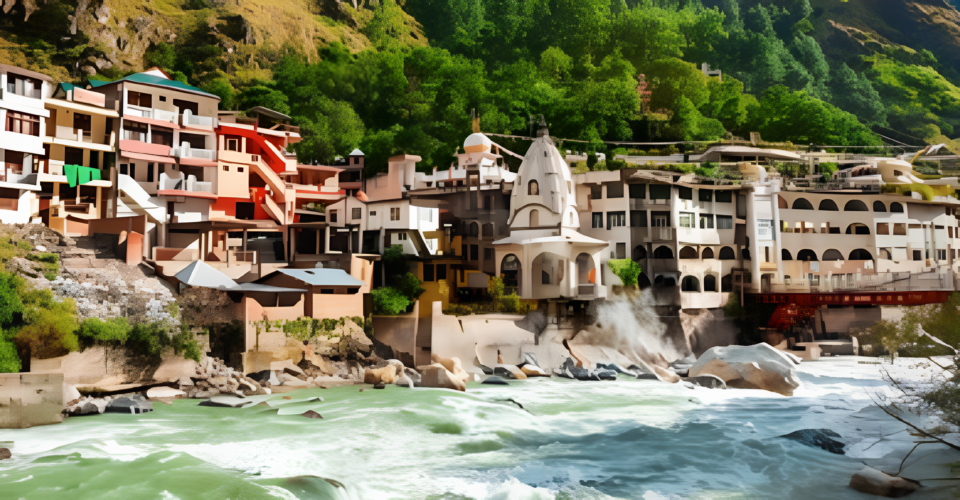

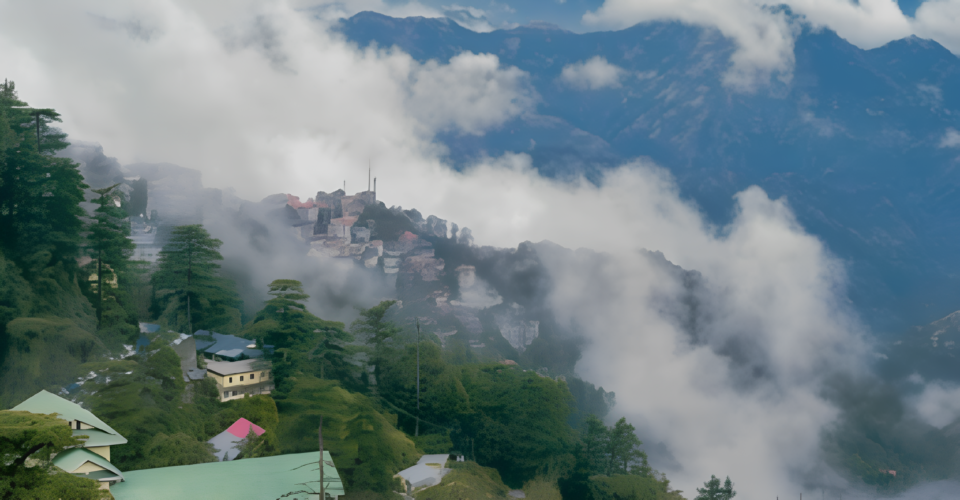

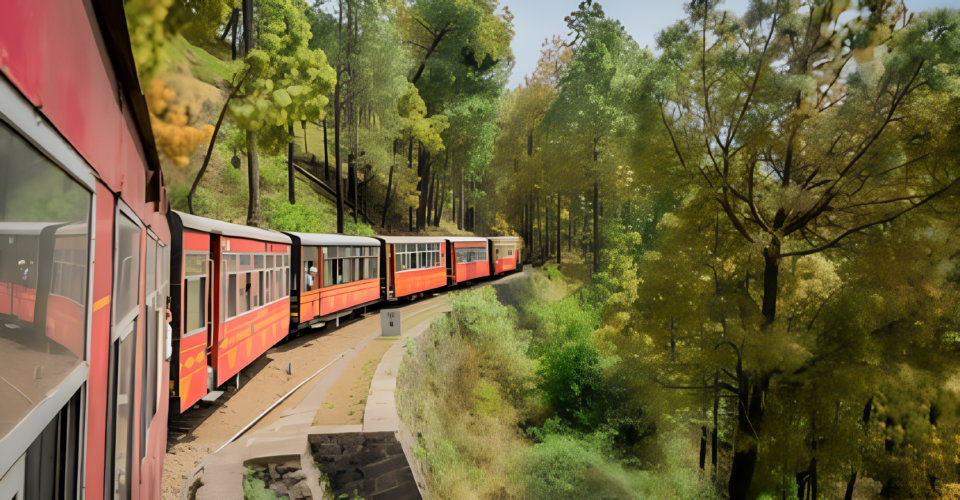
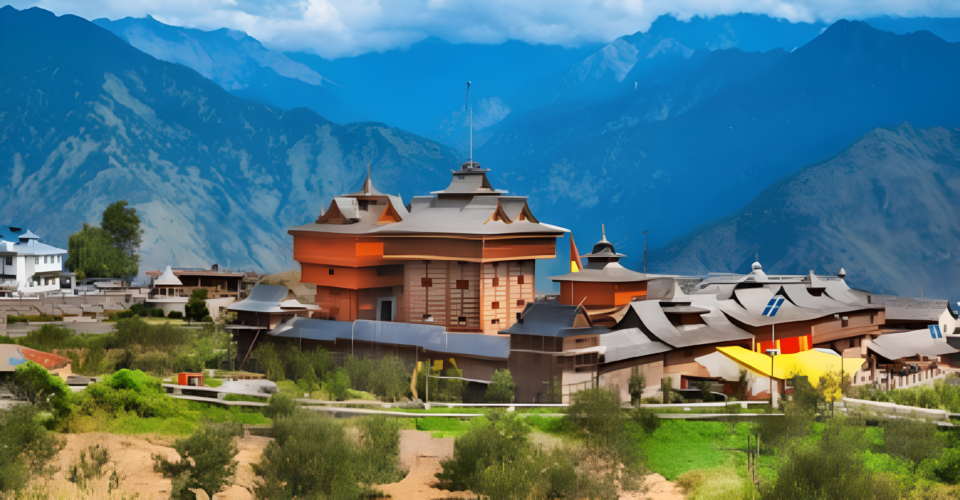

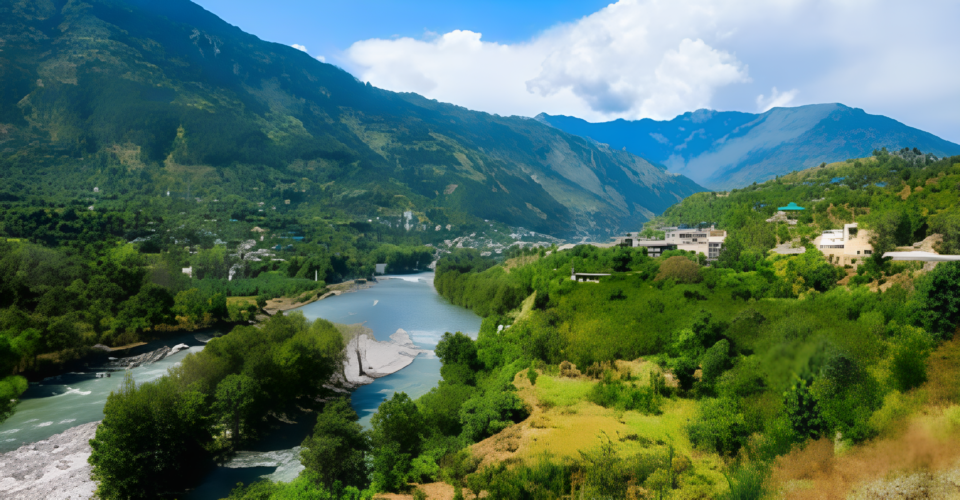
Shimla is a beautiful hill station and the capital of Himachal Pradesh, India. Nestled in the foothills of the Himalayas, it sits at an elevation of about 2,200 meters (7,200 feet) above sea level. Known for its cool climate, colonial charm, and scenic landscapes, Shimla has long been a favorite destination for travelers seeking a peaceful escape from the heat of the plains.
The city is famous for its rolling hills, lush forests of pine, oak, and deodar, and stunning mountain views. Its well-preserved British-era architecture, charming churches, and bustling markets add to its timeless appeal. Shimla also holds cultural importance, hosting festivals and events that reflect its vibrant spirit.
With pleasant summers, snowy winters, and easy access from major cities, Shimla offers a perfect mix of natural beauty, history, and modern comforts, making it one of India’s most beloved hill stations.
Shimla, the picturesque capital city of Himachal Pradesh, has a rich and fascinating history that blends mythology, colonial legacy, and modern development.
The earliest references to Shimla trace back to Hindu mythology. It is believed that the region was originally the abode of Goddess Shyamala, an incarnation of Kali, after whom the town is named (“Shimla” derives from “Shyamala”). Before British rule, the area was primarily a dense forest, sparsely populated by local tribes such as the Paharis.
Shimla was part of the Kingdom of Nepal during the early 19th century. However, after the Anglo-Nepalese War (1814–1816) and the subsequent Treaty of Sugauli, the East India Company annexed this region, and it became part of British India.
Shimla’s real transformation began with the British. In 1819, British officer Lieutenant Ross established the first British residence here. Subsequently, Major Kennedy built the first proper house, “Kennedy House,” in 1822, which set the trend for more British officials settling in Shimla.
Due to its cool climate and stunning natural beauty, Shimla quickly gained popularity among the British as a summer retreat. In 1864, Shimla was officially declared the Summer Capital of British India by Viceroy John Lawrence. During the summer months, the entire British administrative machinery moved here from Delhi, making Shimla the political center of India during that period.
Several iconic colonial structures were built during this time, including:
Shimla also became a hub for political discussions and treaties. The Shimla Agreement of 1914, which attempted to define the boundary between Tibet and British India (leading to the McMahon Line), was signed here.
One of the greatest engineering feats of the British era was the construction of the Kalka-Shimla Railway. Completed in 1903, this narrow-gauge railway, with its numerous tunnels and bridges through rugged mountains, enhanced Shimla’s accessibility and added to its charm. Today, it is a UNESCO World Heritage Site.
After India’s independence in 1947, Shimla initially served as the capital of the Indian state of Punjab. However, when Himachal Pradesh was carved out as a separate state in 1971, Shimla became its capital.
The city’s colonial legacy remained, evident in its architecture, culture, and institutions. Over time, Shimla evolved into a thriving center for tourism, education, and commerce.
One notable post-independence event was the signing of the Shimla Agreement in 1972 between India and Pakistan following the Indo-Pakistan War of 1971. This accord, signed by Prime Minister Indira Gandhi and Pakistani President Zulfikar Ali Bhutto, aimed to establish peaceful relations between the two countries.
Shimla, often called the “Queen of Hills,” enjoys a pleasant climate throughout the year, making it one of India’s most popular hill stations. Located at an altitude of about 2,200 meters (7,200 feet) in the foothills of the Himalayas, Shimla’s weather is characterized by cool summers, chilly winters, and moderate monsoons.
Shimla, often called the “Queen of Hills,” is one of India’s most popular hill stations, located in Himachal Pradesh. Surrounded by snow-capped mountains and lush valleys, Shimla is a year-round destination. Reaching Shimla is quite convenient, and visitors have multiple travel options depending on their starting point, preferences, and budget.
Nearest Airport: Shimla Airport (Jubarhatti Airport) – around 22 km from the city center.
Nearest Railway Station: Shimla Railway Station
Shimla is very well-connected by road to major cities in North India.
Road Conditions: The roads are generally in good condition, although driving in winter (especially December–February) requires caution due to fog, rain, or occasional snow.
Driving to Shimla can be an enjoyable experience, especially if you love road trips. The highways are smooth until Kalka, after which the mountain roads start. It’s recommended to:
Shimla, the capital of Himachal Pradesh, is a popular hill station nestled in the Himalayan foothills. Known for its colonial charm, scenic views, and pleasant climate, Shimla also offers a wide range of modern facilities that cater to tourists, students, and residents alike. Here’s a detailed look at the key facilities available in Shimla:
Well-connected by national and state highways to major cities like Delhi, Chandigarh, and Manali.
Regular government and private bus services (HRTC and Volvo buses) are available.
Shimla Railway Station is the terminus of the UNESCO-listed Kalka-Shimla toy train route.
Kalka is the nearest broad-gauge station, about 96 km away.
Jubbarhatti Airport (Shimla Airport) is about 22 km from the city.
Limited domestic flights operate, mainly connecting to Delhi.
Taxis, auto-rickshaws (in limited areas), and local buses run by HRTC.
Mall Road and Ridge area are pedestrian zones (no vehicles allowed).
Shimla has a range of government and private healthcare centers.
Indira Gandhi Medical College & Hospital (IGMC) – Largest government hospital in the region.
Deen Dayal Upadhyay Zonal Hospital – Another key government facility.
Private Clinics & Hospitals – Include Sanjauli Hospital, Fortis OPD, and many diagnostic centers.
Available throughout the city and open late in commercial areas.
Shimla is a hub for quality education in the region.
Bishop Cotton School
St. Edward’s School
Auckland House School
DAV Public School
Himachal Pradesh University
Indian Institute of Advanced Study
Government College, Sanjauli
Private institutes offering courses in IT, hospitality, and management.
Shimla offers a wide range of stay options for all budgets.
Luxury Hotels: The Oberoi Cecil, Wildflower Hall, Clarkes Hotel
Mid-range: Hotel Combermere, Honeymoon Inn
Budget: Hostels, guesthouses, and homestays available in areas like Lakkar Bazaar and New Shimla
The Mall Road: Hub for branded stores, cafés, and local handicrafts.
Lakkar Bazaar: Famous for wooden items and souvenirs.
Lower Bazaar: Budget-friendly shopping.
Local Products: Woolens, Himachali caps, handicrafts, and apple-based products.
All major banks operate in Shimla with ATMs widely available.
State Bank of India, HDFC, ICICI, Axis Bank, PNB, and others.
ATMs are available in main market areas and near tourist spots.
Mobile networks from Jio, Airtel, BSNL, and Vi are available.
4G connectivity is decent, with Wi-Fi available in hotels and cafés.
Public Wi-Fi is available in some parts of Mall Road.
Shimla is considered safe for tourists and residents.
Tourist Police are available in main areas for assistance.
CCTV surveillance in high-traffic zones.
Fire Stations & Emergency Numbers are active and responsive.
Electricity & Water Supply: Managed by local municipal authorities; generally stable.
Waste Management: Regular garbage collection and disposal system.
Post Offices & Courier Services: India Post, Blue Dart, DTDC, and other courier services operate here.
Tourist Information Centers: Available near Mall Road and Old Bus Stand.
Guided Tours: Local guides and operators offer city and adventure tours.
Taxi & Car Rentals: Easily available for local and intercity travel.
Carry warm clothes year-round; winters can be harsh with snowfall.
Vehicles are not allowed on Mall Road; use lifts or walk.
Book accommodations in advance during peak season (May–July & December–January).
Nestled in the lush hills of Himachal Pradesh, Shimla is a stunning blend of colonial charm, scenic beauty, and vibrant culture. Once the summer capital of British India, Shimla today is one of India’s most popular hill stations, offering travelers a refreshing escape. Whether you’re seeking panoramic views, historical sites, or adventure, Shimla has something for everyone. Here’s a guide to the 10 must-visit attractions in and around Shimla:
Located at the heart of Shimla, The Ridge is an open space offering spectacular views of snow-capped mountains. It’s a cultural hub lined with colonial-era buildings, cafes, shops, and the famous Christ Church. Ideal for evening strolls, it’s also the main venue for Shimla’s cultural events and festivals.
Highlights:
A bustling promenade just below The Ridge, Mall Road is Shimla’s most famous shopping street. It features an array of local boutiques, eateries, bookshops, and souvenir stores. Vehicles are banned here, making it a pleasant place to walk and explore.
Highlights:
3. Jakhoo Temple
Situated on Jakhoo Hill, the highest point in Shimla (2,455 meters), the Jakhoo Temple is dedicated to Lord Hanuman. It houses a gigantic 108-feet-high statue of Hanuman, visible from most parts of the town.
Highlights:
Just 16 km from Shimla, Kufri is a small hill station known for its adventure parks, ski slopes, and panoramic views. It’s especially popular during winter when it becomes a snowy wonderland.
Highlights:
On the way to Kufri, Green Valley is a breathtaking spot surrounded by dense pine and deodar forests. It’s a favorite among photographers and nature lovers.
Highlights:
Housed in the historic Viceregal Lodge, this is where important discussions leading to India’s independence took place. Today, the building serves as a research institute and museum open to visitors.
Highlights:
A flat terrain surrounded by thick deodar trees, Annandale was once a playground for the British. Today, it hosts the Indian Army Museum and is also used for golf and polo matches.
Highlights:
Located about 7 km from Shimla, Chadwick Falls is a hidden gem nestled within the Glen Forest. During the monsoon season, the waterfall is at its most spectacular.
Highlights:
A quiet and less touristy destination just 12 km from Shimla, Mashobra is perfect for travelers seeking solitude. The area is rich with apple orchards, dense forests, and winding streams.
Highlights:
Famous for its scenic 9-hole golf course designed under Lord Curzon’s supervision, Naldehra is a paradise for nature lovers. Rolling meadows, cedar forests, and a cool breeze make it an ideal getaway.
Highlights:
Shimla, the “Queen of Hills,” is one of India’s most charming hill stations. Nestled in the majestic Himalayas, Shimla blends colonial history, natural beauty, and vibrant local culture. Whether you’re an adventure seeker, history enthusiast, nature lover, or simply looking to relax, Shimla offers something for everyone. Here’s a complete guide to the top things to do in Shimla:
The heart of Shimla’s social life, Mall Road is a lively stretch filled with shops, cafes, restaurants, and colonial-era buildings. You can shop for woolens, handicrafts, jewelry, and souvenirs or simply enjoy a peaceful walk admiring the beautiful views.
Located adjacent to Mall Road, The Ridge is an open space famous for its breathtaking views of the snow-capped mountains. It’s also a cultural hub where many events and festivals are held. Don’t miss the historic Christ Church, one of the oldest churches in North India.
Dedicated to Lord Hanuman, Jakhoo Temple is perched atop Jakhoo Hill, the highest point in Shimla. A massive 108-feet Hanuman statue is a major attraction here. You can either trek up the hill or take a cable car ride (Jakhoo Ropeway) for scenic views.
A UNESCO World Heritage Site, the Kalka–Shimla Toy Train is a must-experience. The slow journey through 102 tunnels, lush green valleys, and charming old stations offers an unforgettable experience of the hills.
Once the summer residence of the British Viceroy, this grand building is now an institute but is open for visitors. The architecture, lush gardens, and rich historical significance make it a fascinating visit.
Located just 16 km from Shimla, Kufri is a small hill station known for its adventure activities. In winter, it’s a skiing paradise. You can also enjoy horse riding to the Mahasu Peak and visit the Kufri Fun World amusement park.
Set amidst dense forests, Chadwick Falls is a beautiful and serene spot. It’s especially stunning during the monsoon when the waterfall is at its full glory. The trek through the woods to reach the falls adds to the adventure.
Shimla boasts the largest natural ice-skating rink in South Asia. During the winter months (December to February), you can glide over the ice while enjoying the crisp mountain air.
Lakkar Bazaar is a quaint market known for wooden handicrafts and souvenirs. It’s a great place to buy walking sticks, woolens, and local crafts. Don’t forget to try the famous “Sita Ram’s Chole Bhature” here.
Located on a hilltop about 11 km from Shimla, Tara Devi Temple offers peace and panoramic views of the surroundings. The temple, surrounded by dense forests, is both a spiritual and scenic retreat.
Famous for its beautiful golf course—the Naldehra Golf Course—this area also offers opportunities for horse riding, trekking, and camping amidst breathtaking landscapes.
For those seeking tranquility away from the crowds, Mashobra is an untouched paradise. You can indulge in nature walks, bird watching, and picnicking in apple orchards.
If your visit coincides with festivals like the Shimla Summer Festival or Christmas celebrations at the Christ Church, you’re in for a treat. Local music, dance performances, and cultural fairs add vibrancy to the town.
